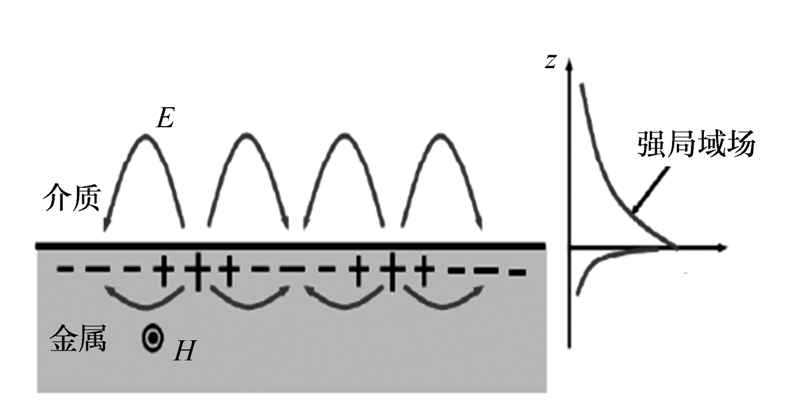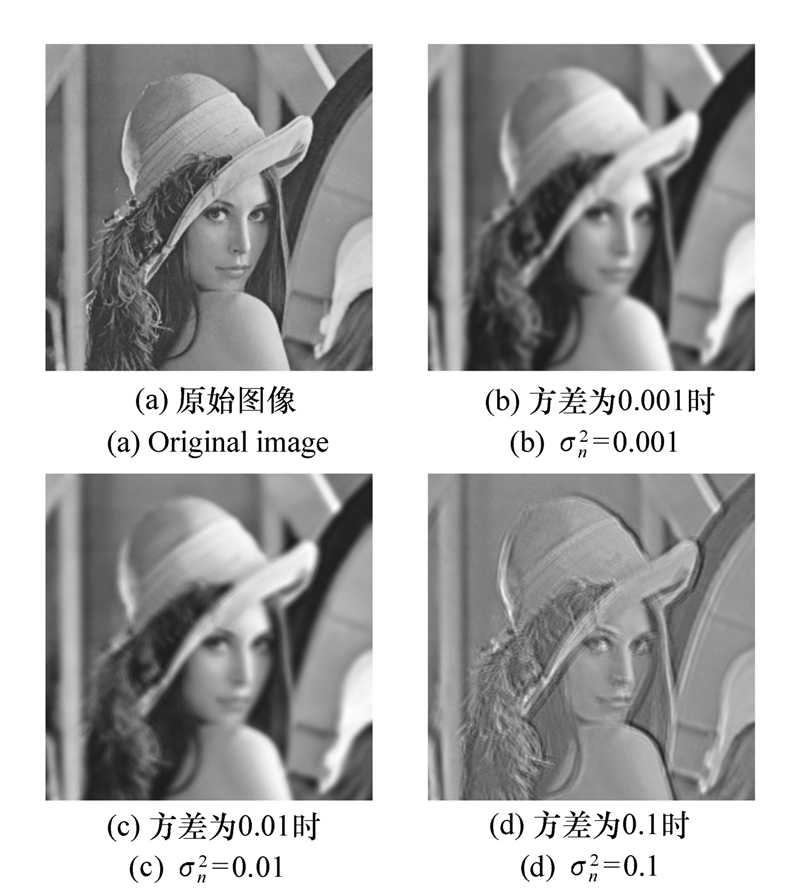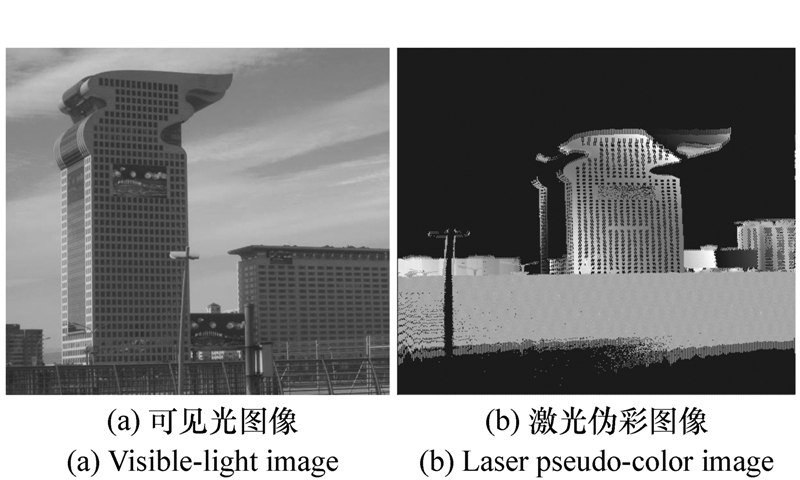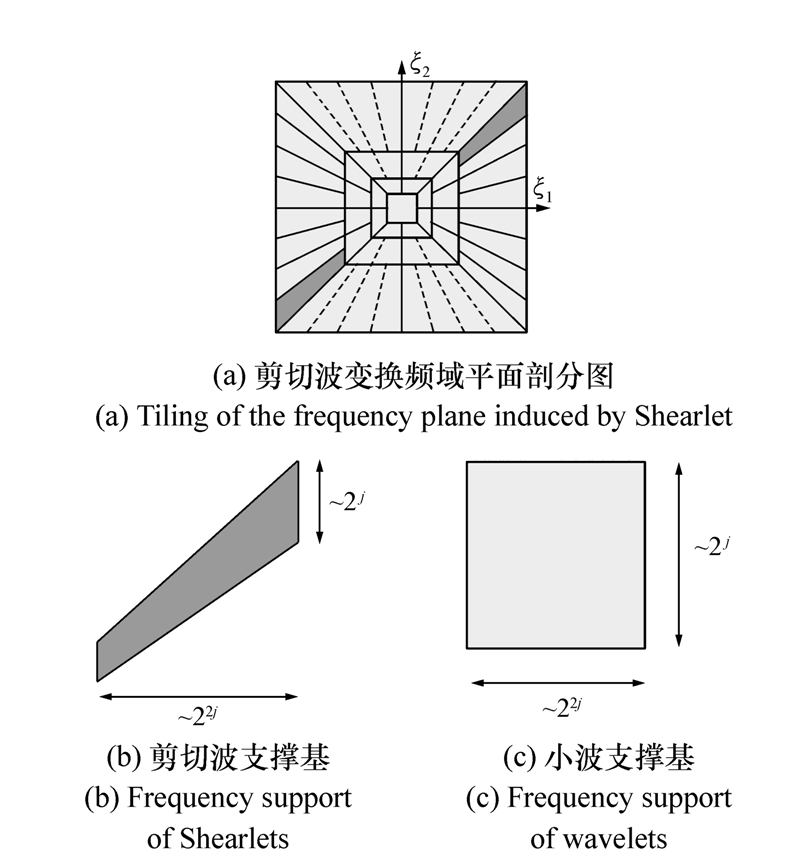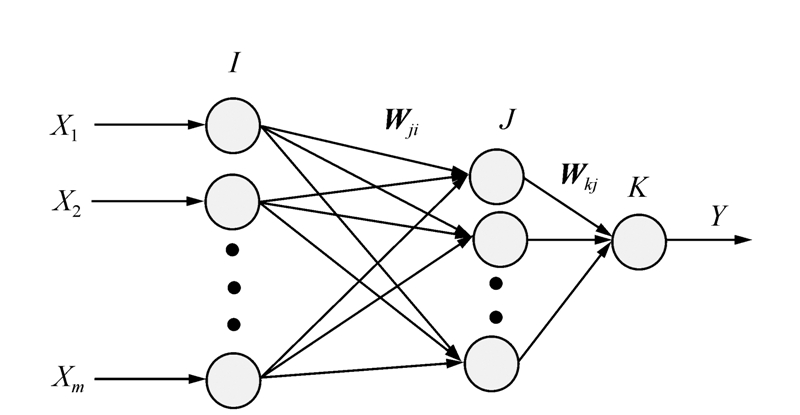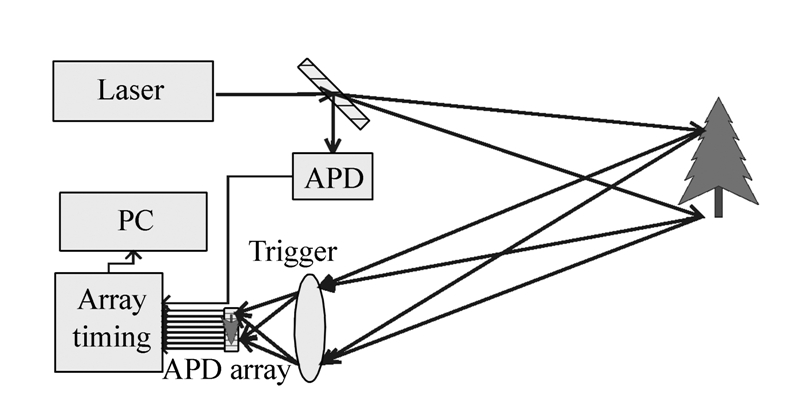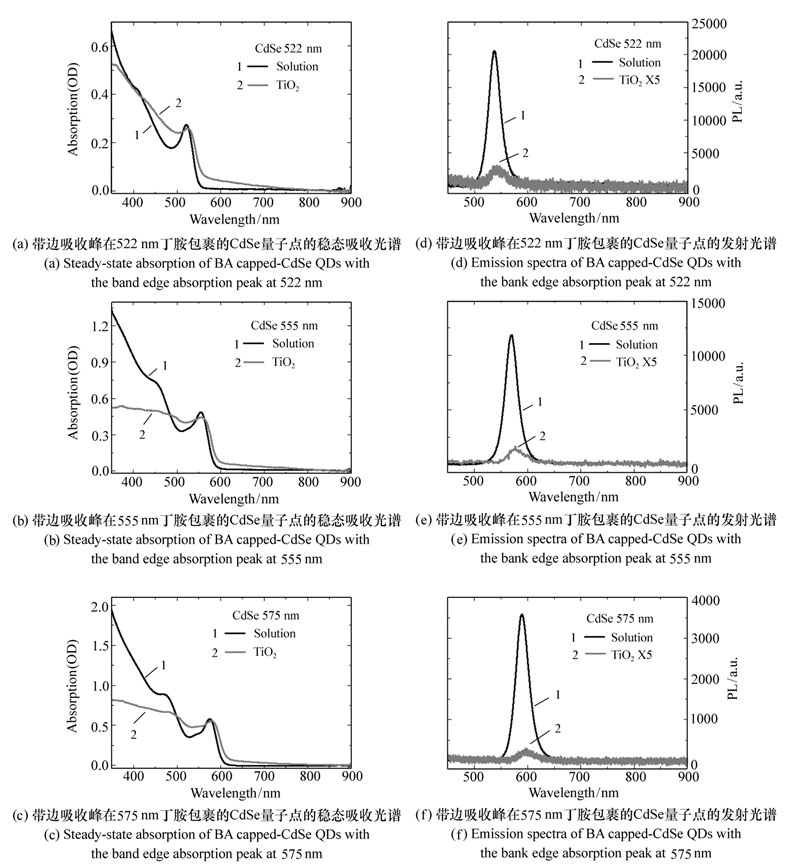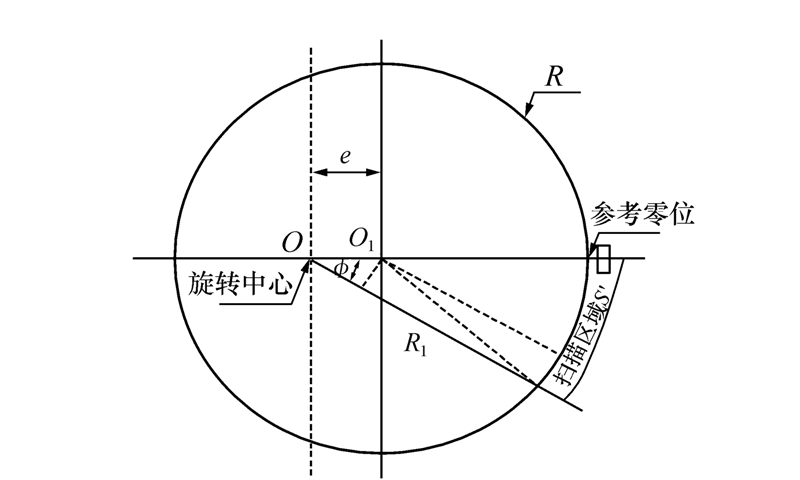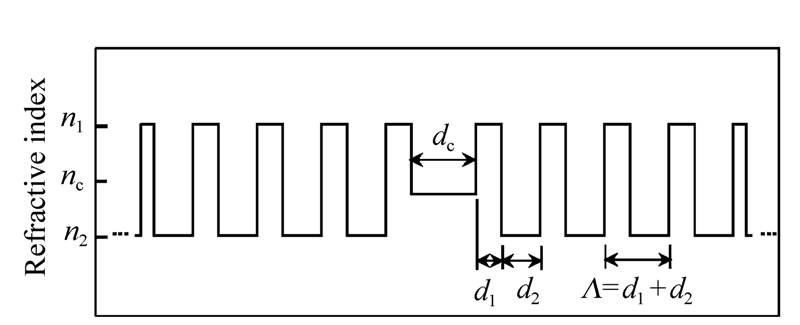2015 Vol. 8, No. 3
2015, 8(3): 313-328.
doi: 10.3788/CO.20150803.0313
Abstract:
Remote phosphor technology for white LEDs provides new encapsulation construction, which separates the blue chip and color converting materials at a large distance. This technology could potentially reduce the working temperature of phosphors and solve the thermal quenching problems and enable us to fabricate flat panel lighting source with enhanced lighting quality. Therefore, remote phosphor technology has drawn a great of attentions from both of the scientific and industrial communities. White LED applications with remote phosphor technology will be further developed into be more functional, high-performance and intelligent. In this review, we summarize the recent advances in remote phosphor technology for white LED with emphasis on the encapsulation structures, devices evaluation as well as the novel down conversion materials. The prospects of remote phosphor technology are also presented.
Remote phosphor technology for white LEDs provides new encapsulation construction, which separates the blue chip and color converting materials at a large distance. This technology could potentially reduce the working temperature of phosphors and solve the thermal quenching problems and enable us to fabricate flat panel lighting source with enhanced lighting quality. Therefore, remote phosphor technology has drawn a great of attentions from both of the scientific and industrial communities. White LED applications with remote phosphor technology will be further developed into be more functional, high-performance and intelligent. In this review, we summarize the recent advances in remote phosphor technology for white LED with emphasis on the encapsulation structures, devices evaluation as well as the novel down conversion materials. The prospects of remote phosphor technology are also presented.
2015, 8(3): 329-339.
doi: 10.3788/CO.20150803.0329
Abstract:
On the basis of Surface Plasmon Polariton(SPP) waveguide dispersion relation being derived systemically, the applications of SPP waveguide are summarized in this paper. The slow wave effect in SPP waveguide, the EIT(electromagnetically induced transparency)-like phenomenon, the tunable SPP waveguide filter at optical and microwave frequencies, the SPP waves cloaking through diffraction are mainly introduced. Problems and challenges in this field are pointed out finally, and the future developing trend is prospected. Analysis indicates that reducing the loss of the surface plasmon waveguide materials and the difficulty of the production process by introducing gain mediums and superconducting materials are the problem to be solved urgently in the future.
On the basis of Surface Plasmon Polariton(SPP) waveguide dispersion relation being derived systemically, the applications of SPP waveguide are summarized in this paper. The slow wave effect in SPP waveguide, the EIT(electromagnetically induced transparency)-like phenomenon, the tunable SPP waveguide filter at optical and microwave frequencies, the SPP waves cloaking through diffraction are mainly introduced. Problems and challenges in this field are pointed out finally, and the future developing trend is prospected. Analysis indicates that reducing the loss of the surface plasmon waveguide materials and the difficulty of the production process by introducing gain mediums and superconducting materials are the problem to be solved urgently in the future.
2015, 8(3): 340-349.
doi: 10.3788/CO.20150803.0340
Abstract:
HF/DF laser is a laser light source offering the highest output energy in the mid-infrared wave band. It is also a coherent source with wide application prospect. The research production and application of the non-chain HF/DF laser are reviewed in this paper. The advantages and disadvantages of the non-chain HF/DF laser are analyzed in the application field. The key techniques and problems generating the non-chain HF/DF laser are concluded and analyzed. The future development directions of the non-chain HF/DF laser are pointed out.
HF/DF laser is a laser light source offering the highest output energy in the mid-infrared wave band. It is also a coherent source with wide application prospect. The research production and application of the non-chain HF/DF laser are reviewed in this paper. The advantages and disadvantages of the non-chain HF/DF laser are analyzed in the application field. The key techniques and problems generating the non-chain HF/DF laser are concluded and analyzed. The future development directions of the non-chain HF/DF laser are pointed out.
2015, 8(3): 350-359.
doi: 10.3788/CO.20150803.0350
Abstract:
Spaceborne shimmer detector can get satellite cloud image from visible to near-infrared wave band and the earth's surface character data in low-light condition, and it is the most effective instrument for detecting the low clouds and heavy fog during nighttime and twilight. This paper introduces the principle of spaceborne shimmer detection. Then, it reviews the recent development of spaceborne shimmer detector in home and abroad, and describes its satellite system, instruments' technical target, key imaging technology and data character. Finally, it discusses some applications of spaceborne shimmer technology in city light and wildfire detection, cloud and fog detection, dust and smoke detection and so on. Spaceborne shimmer technology can provide a platform for Chinese meteorologic satellite development, and could increase and broaden the method of weather observation.
Spaceborne shimmer detector can get satellite cloud image from visible to near-infrared wave band and the earth's surface character data in low-light condition, and it is the most effective instrument for detecting the low clouds and heavy fog during nighttime and twilight. This paper introduces the principle of spaceborne shimmer detection. Then, it reviews the recent development of spaceborne shimmer detector in home and abroad, and describes its satellite system, instruments' technical target, key imaging technology and data character. Finally, it discusses some applications of spaceborne shimmer technology in city light and wildfire detection, cloud and fog detection, dust and smoke detection and so on. Spaceborne shimmer technology can provide a platform for Chinese meteorologic satellite development, and could increase and broaden the method of weather observation.
2015, 8(3): 360-367.
doi: 10.3788/CO.20150803.0360
Abstract:
In this paper, arrays of metallic half-ring/rectangle were designed, and their transmission properties were investigated by the finite element method. Fano resonances appeare in the transmission spectra due to the electric field couplings between the half-ring and rectangle. Fano resonant peaks are dependent strongly on the structural parameters and the relative position of the half-ring and rectangle. They are also sensitive to refraction index around the arrays of metallic half-ring/rectangle and the highest sensitivity can be achieved to 862.5 nm/RIU. These results would be helpful for designing the micro-nano photonic devices based on the Fano resonance.
In this paper, arrays of metallic half-ring/rectangle were designed, and their transmission properties were investigated by the finite element method. Fano resonances appeare in the transmission spectra due to the electric field couplings between the half-ring and rectangle. Fano resonant peaks are dependent strongly on the structural parameters and the relative position of the half-ring and rectangle. They are also sensitive to refraction index around the arrays of metallic half-ring/rectangle and the highest sensitivity can be achieved to 862.5 nm/RIU. These results would be helpful for designing the micro-nano photonic devices based on the Fano resonance.
2015, 8(3): 368-377.
doi: 10.3788/CO.20150803.0368
Abstract:
As the turbulence-degraded images are stochastic, an adaptive restoration approach of multi-frame turbulence-degraded images was proposed based on stochastic Point Spread Function(PSF). Firstly, an image degradation model of stochastic PSF was introduced, and the influence of the model on the image restoration was analyzed. The degradation model of multi-frame images based on stochastic PSF was established. On this basis, the TV restoration model based on multi-frame images was established. In order to improve the computational efficiency of the algorithm, the model was solved by Forward-Backward Splitting(FBS) operator. Then a new adaptive selection method of regularization parameter was proposed. When the regularization parameter which was calculated by the objective function of the TV model was convergent, the Peak Signal-to-Noise Ratio(PSNR) of restoration image reached the maximum value. In order to get the best restoration effect, the relative error of the objective function was used as the iterative termination condition of the adaptive algorithm. Finally, the number of degraded images should be no more than 10 frames through the experimental analysis. Experimental results show that the ISNR of the AFBS algorithm has increased 1.4 dB more than the FBS algorithm based on single frame while the computing time is comparative when the number of degraded images was 10 frames. The proposed algorithm has an obvious inhibition on the noises, and it can obtain a better restoration effect on turbulence-degraded images.
As the turbulence-degraded images are stochastic, an adaptive restoration approach of multi-frame turbulence-degraded images was proposed based on stochastic Point Spread Function(PSF). Firstly, an image degradation model of stochastic PSF was introduced, and the influence of the model on the image restoration was analyzed. The degradation model of multi-frame images based on stochastic PSF was established. On this basis, the TV restoration model based on multi-frame images was established. In order to improve the computational efficiency of the algorithm, the model was solved by Forward-Backward Splitting(FBS) operator. Then a new adaptive selection method of regularization parameter was proposed. When the regularization parameter which was calculated by the objective function of the TV model was convergent, the Peak Signal-to-Noise Ratio(PSNR) of restoration image reached the maximum value. In order to get the best restoration effect, the relative error of the objective function was used as the iterative termination condition of the adaptive algorithm. Finally, the number of degraded images should be no more than 10 frames through the experimental analysis. Experimental results show that the ISNR of the AFBS algorithm has increased 1.4 dB more than the FBS algorithm based on single frame while the computing time is comparative when the number of degraded images was 10 frames. The proposed algorithm has an obvious inhibition on the noises, and it can obtain a better restoration effect on turbulence-degraded images.
2015, 8(3): 378-385.
doi: 10.3788/CO.20150803.0378
Abstract:
In this paper, we use scanning laser imaging radar to acquire test data and achieve three-dimensional imaging process to laser data, giving data fusion method based on target features between laser radar image and passive optical image, and realizing three-dimensional fusion between laser image and optical image. The test results show that the fusion method of different image qualities based on target features proposed in this paper is feasible. The fused image has both rich spectral and three-dimensional informations.
In this paper, we use scanning laser imaging radar to acquire test data and achieve three-dimensional imaging process to laser data, giving data fusion method based on target features between laser radar image and passive optical image, and realizing three-dimensional fusion between laser image and optical image. The test results show that the fusion method of different image qualities based on target features proposed in this paper is feasible. The fused image has both rich spectral and three-dimensional informations.
2015, 8(3): 386-393.
doi: 10.3788/CO.20150803.0386
Abstract:
In order to realize high precision and high accuracy of star pattern recognition and attitude determination, the star extraction algorithm is studied and the Shearlet transform is applied to the star extraction technology. First, Shearlet transform is used for the decomposition of star image to get coefficients of different scales, different directions. Then threshold processing is used to shear coefficients and reconstruct them to get the de-noising image. Then Top-hat transform and adaptive threshold processing are used for the reconstruction image to complete the star image filtering. Finally the centroid error compensation method is used for extraction of star coordinates, which effectively completes the star extraction. The experimental results show that the noise removal is very effective with star image filtering based on shearlet transform. The error by the centroid error compensation method is about 0.003 and the method is obviously superior to the traditional centroid method. It can satisfy the star sensor requirements of high precision and strong anti-jamming.
In order to realize high precision and high accuracy of star pattern recognition and attitude determination, the star extraction algorithm is studied and the Shearlet transform is applied to the star extraction technology. First, Shearlet transform is used for the decomposition of star image to get coefficients of different scales, different directions. Then threshold processing is used to shear coefficients and reconstruct them to get the de-noising image. Then Top-hat transform and adaptive threshold processing are used for the reconstruction image to complete the star image filtering. Finally the centroid error compensation method is used for extraction of star coordinates, which effectively completes the star extraction. The experimental results show that the noise removal is very effective with star image filtering based on shearlet transform. The error by the centroid error compensation method is about 0.003 and the method is obviously superior to the traditional centroid method. It can satisfy the star sensor requirements of high precision and strong anti-jamming.
2015, 8(3): 394-400.
doi: 10.3788/CO.20150803.0394
Abstract:
We extract the foreground region of stereoscopic video by combining the grayscales of left and right view, and synthesize the two pictures into a disparity map, then extract the horizontal parallax and calculate the depth parallax. Finally, we build the depth parallax-visual discomfort model on the basis of subject assessment and optimize the visual discomfort model by considering the luminance influence. Experimental results indicate that the error rate is less than 5% between calculated value and human subjective evaluation results, and most video error rates are less than 1%. The evaluation model is more accord with human subjective perception results and has good practicability, which provides a reference for the stereo video comfort evaluation.
We extract the foreground region of stereoscopic video by combining the grayscales of left and right view, and synthesize the two pictures into a disparity map, then extract the horizontal parallax and calculate the depth parallax. Finally, we build the depth parallax-visual discomfort model on the basis of subject assessment and optimize the visual discomfort model by considering the luminance influence. Experimental results indicate that the error rate is less than 5% between calculated value and human subjective evaluation results, and most video error rates are less than 1%. The evaluation model is more accord with human subjective perception results and has good practicability, which provides a reference for the stereo video comfort evaluation.
2015, 8(3): 401-406.
doi: 10.3788/CO.20150803.0401
Abstract:
To improve the precision of image motion measurement for airborne pendulum-swing cameras, a method of image motion measurement combining the coordinate transformation and image correlation is proposed. First, the initial image motion velocity is calculated by using the coordinate transformation method. Then, the image motion velocity residual errors are compensated by using image joint transformation correlation method. The joint images are produced by an area array CCD which is set paralleled to the imaging linear TDI CCD in the focal plane of the camera. The current and the reference frames output from the area array CCD are combined into a joint image. By taking 2D spatial correlation computation on the joint image, the image motion correction vector is obtained. Corrections of the forward and pendulum-swing image motions are determined by decomposing the vector. Simulation test results show that the image motion measurement error is less than 0.1 pixels for input images with SNR=4 dB.
To improve the precision of image motion measurement for airborne pendulum-swing cameras, a method of image motion measurement combining the coordinate transformation and image correlation is proposed. First, the initial image motion velocity is calculated by using the coordinate transformation method. Then, the image motion velocity residual errors are compensated by using image joint transformation correlation method. The joint images are produced by an area array CCD which is set paralleled to the imaging linear TDI CCD in the focal plane of the camera. The current and the reference frames output from the area array CCD are combined into a joint image. By taking 2D spatial correlation computation on the joint image, the image motion correction vector is obtained. Corrections of the forward and pendulum-swing image motions are determined by decomposing the vector. Simulation test results show that the image motion measurement error is less than 0.1 pixels for input images with SNR=4 dB.
2015, 8(3): 407-414.
doi: 10.3788/CO.20150803.0407
Abstract:
In order to better describe the internal complexity of image, the establishment of the mathematic model between the image complexity and each index is the key step to study the complexity of image. Firstly, starting from the image texture, we try to establish a quantitative and precise mathematical description of the relationship between the image and the complexity of various indicators. There is no clear mathematical relationship between the image complexity and the measurable indicators, so gray level co-occurrence matrix(GLCM) is used to analyze the main characteristic parameters of the texture. The image complexity evaluation method is proposed based on BP neural network. Then a nonlinear mathematical evaluation model between image complexity and each index is established. And the weight values and index are obtained by the training for the neural network and learning through numbers of pictures. The verification results show that the evaluation model is able to reflect the internal complexity of the image truly, and the experimental results obtained are consistent with human visual perception. It is of a certain reference value for the application of BP neural network to study the image complexity.
In order to better describe the internal complexity of image, the establishment of the mathematic model between the image complexity and each index is the key step to study the complexity of image. Firstly, starting from the image texture, we try to establish a quantitative and precise mathematical description of the relationship between the image and the complexity of various indicators. There is no clear mathematical relationship between the image complexity and the measurable indicators, so gray level co-occurrence matrix(GLCM) is used to analyze the main characteristic parameters of the texture. The image complexity evaluation method is proposed based on BP neural network. Then a nonlinear mathematical evaluation model between image complexity and each index is established. And the weight values and index are obtained by the training for the neural network and learning through numbers of pictures. The verification results show that the evaluation model is able to reflect the internal complexity of the image truly, and the experimental results obtained are consistent with human visual perception. It is of a certain reference value for the application of BP neural network to study the image complexity.
2015, 8(3): 415-421.
doi: 10.3788/CO.20150803.0415
Abstract:
Considering the requirement on the wide linear field of the strapdown semi-active laser seeker, the relationship of linear field for four-quadrant detecting(QD) photoelectric system and target distance was analyzed. First, according to the system parameters, the relationship of target distance on different visibility, different target reflectivity and the received power for the laser seeker was calculated. Then by ray tracing method, the power distribution on quadrant detector for different field was found. Finally, the relationship of linear field and the received power was obtained. Linear field increased from zero to the theoretical value of optical design with the target distance decreasing. Experimental results indicate that linear field increases from 0° to ±9° with the received power increasing, which agrees well with the result of theoretic computation. The change law of the linear field should be considered for stapdown semi-active laser system design.
Considering the requirement on the wide linear field of the strapdown semi-active laser seeker, the relationship of linear field for four-quadrant detecting(QD) photoelectric system and target distance was analyzed. First, according to the system parameters, the relationship of target distance on different visibility, different target reflectivity and the received power for the laser seeker was calculated. Then by ray tracing method, the power distribution on quadrant detector for different field was found. Finally, the relationship of linear field and the received power was obtained. Linear field increased from zero to the theoretical value of optical design with the target distance decreasing. Experimental results indicate that linear field increases from 0° to ±9° with the received power increasing, which agrees well with the result of theoretic computation. The change law of the linear field should be considered for stapdown semi-active laser system design.
2015, 8(3): 422-427.
doi: 10.3788/CO.20150803.0422
Abstract:
In order to realize scannerless three dimensional(3D) laser imaging and analyze system parameters impact on ranging precision, a 3D imaging receiver with 8×8 elements is implemented. The receiver utilizes linear mode APD array. Analog signal amplification and threshold processing is applied to convert the optical signal to digital pulse. Then a 64 channel time to digital convertor array is implemented in FPGA, and 3D laser imaging receiver is invented which can acquire 3D information of target in real-time. First the principle of 3D imaging and construction of the receiver is introduced, including procedure and implementation of the array signal processing. Then electrical test and 3D imaging experiment are carried out for FPGA timing unit and receiver respectively, which indicate a timing resolution of 140 ps and range resolution of 0.2 m. At last, range resolution error is analyzed and we come to the conclusion that laser pulse energy fluctuation is the main error source.
In order to realize scannerless three dimensional(3D) laser imaging and analyze system parameters impact on ranging precision, a 3D imaging receiver with 8×8 elements is implemented. The receiver utilizes linear mode APD array. Analog signal amplification and threshold processing is applied to convert the optical signal to digital pulse. Then a 64 channel time to digital convertor array is implemented in FPGA, and 3D laser imaging receiver is invented which can acquire 3D information of target in real-time. First the principle of 3D imaging and construction of the receiver is introduced, including procedure and implementation of the array signal processing. Then electrical test and 3D imaging experiment are carried out for FPGA timing unit and receiver respectively, which indicate a timing resolution of 140 ps and range resolution of 0.2 m. At last, range resolution error is analyzed and we come to the conclusion that laser pulse energy fluctuation is the main error source.
2015, 8(3): 428-438.
doi: 10.3788/CO.20150803.0428
Abstract:
In this paper, we have investigated the initial interfacial electron transfer dynamics in butylamine-capped CdSe quantum dot(QD)-sensitized nanocrystalline TiO2 films by ultrafast spectroscopy. Different with previous reports, the experiment results indicate that after surface modification of CdSe QDs, a two-phase electron injection mechanism(hot and cold electron injection) is validated, namely, electrons transfer from high vibration energy levels in conduction band and conduction band bottom of CdSe quantum dots into conduction band of TiO2, respectively. This mechanism depicts a picture on the detailed charge transfer processes at the nano interfaces. We further find that the electron coupling strength (3.6±0.1 meV) of hot electron injection is two orders of magnitude larger than that of relaxed ground-state electron injection, which gives a value of ~50 μeV accompanied with reorganization energy 0.083 eV on the basis of Marcus theory.
In this paper, we have investigated the initial interfacial electron transfer dynamics in butylamine-capped CdSe quantum dot(QD)-sensitized nanocrystalline TiO2 films by ultrafast spectroscopy. Different with previous reports, the experiment results indicate that after surface modification of CdSe QDs, a two-phase electron injection mechanism(hot and cold electron injection) is validated, namely, electrons transfer from high vibration energy levels in conduction band and conduction band bottom of CdSe quantum dots into conduction band of TiO2, respectively. This mechanism depicts a picture on the detailed charge transfer processes at the nano interfaces. We further find that the electron coupling strength (3.6±0.1 meV) of hot electron injection is two orders of magnitude larger than that of relaxed ground-state electron injection, which gives a value of ~50 μeV accompanied with reorganization energy 0.083 eV on the basis of Marcus theory.
2015, 8(3): 439-446.
doi: 10.3788/CO.20150803.0439
Abstract:
The output characteristics of sensor with two-circle coaxial optical fiber(TCCOF) are affected by the lubricating oil when the optical fiber sensor is adopted to measure the thickness of lubricating film. The effect of propagating medium on the maximum incidence angle of fiber is analyzed basing on the refraction law. The mathematical model of sensor in the lubricating oil environment is built taking into account the light loss and adopting the light intensity quasi-Gaussian distributing law. Meanwhile the output characteristics of sensor in the different propagating medium are gained by the simulating calculation of the model. Based on that the calibration experiment rig is built to verify the simulating output characteristics of sensor. The results indicate that the sensibility of TCCOF sensor are 0.691/mm in the air and 0.464/mm in the lubricating oil, respectively; the TCCOF sensor can eliminate the effect of changing optical power; the sensibility of TCCOF sensor increases with the increase of reflector curvature radius; the symmetrical structure of TCCOF sensor can decrease the effect of the different peripheral installing direction on the output of optical fiber sensor. Therefore, the TCCOF sensor must be calibrated in the corresponding lubricating oil and reflector environment.
The output characteristics of sensor with two-circle coaxial optical fiber(TCCOF) are affected by the lubricating oil when the optical fiber sensor is adopted to measure the thickness of lubricating film. The effect of propagating medium on the maximum incidence angle of fiber is analyzed basing on the refraction law. The mathematical model of sensor in the lubricating oil environment is built taking into account the light loss and adopting the light intensity quasi-Gaussian distributing law. Meanwhile the output characteristics of sensor in the different propagating medium are gained by the simulating calculation of the model. Based on that the calibration experiment rig is built to verify the simulating output characteristics of sensor. The results indicate that the sensibility of TCCOF sensor are 0.691/mm in the air and 0.464/mm in the lubricating oil, respectively; the TCCOF sensor can eliminate the effect of changing optical power; the sensibility of TCCOF sensor increases with the increase of reflector curvature radius; the symmetrical structure of TCCOF sensor can decrease the effect of the different peripheral installing direction on the output of optical fiber sensor. Therefore, the TCCOF sensor must be calibrated in the corresponding lubricating oil and reflector environment.
2015, 8(3): 456-463.
doi: 10.3788/CO.20150803.0456
Abstract:
In order to realize photometric measurement, two types of measurement way are established. First, the system composition and the contrast measurement principle are introduced, and then wide spectrum measurement way and filter measurement way based on the analysis of engineering are proposed. If G-type stars and space target in the same field of view, the wide spectrum measurement way can be chosen; if G-type reference stars is less, filter measurement way can be chosen; measuring error analysis for these two ways is given. Finally experimental results indicate that the wide spectrum measurement way has high signal noise ratio(SNR); the limiting magnitude is 16 mv, and the measurement precision can reach 0.15 magnitude under better weather condition; under the same SNR condition, due to the less energy detected by filter measurement way, limit magnitude is 14 mv; under the condition of small weather changes, measurement precision can reach 0.02 magnitude. Two types of measurement errors are almost the same, but the number of stars calibrated by the wide spectrum measurement way increases by 2.4 times, which is advantageous for the data processing and calculation.
In order to realize photometric measurement, two types of measurement way are established. First, the system composition and the contrast measurement principle are introduced, and then wide spectrum measurement way and filter measurement way based on the analysis of engineering are proposed. If G-type stars and space target in the same field of view, the wide spectrum measurement way can be chosen; if G-type reference stars is less, filter measurement way can be chosen; measuring error analysis for these two ways is given. Finally experimental results indicate that the wide spectrum measurement way has high signal noise ratio(SNR); the limiting magnitude is 16 mv, and the measurement precision can reach 0.15 magnitude under better weather condition; under the same SNR condition, due to the less energy detected by filter measurement way, limit magnitude is 14 mv; under the condition of small weather changes, measurement precision can reach 0.02 magnitude. Two types of measurement errors are almost the same, but the number of stars calibrated by the wide spectrum measurement way increases by 2.4 times, which is advantageous for the data processing and calculation.
2015, 8(3): 464-470.
doi: 10.3788/CO.20150803.0464
Abstract:
According to the accuracy specifications of telescope goniometry, error sources of sacle tape grating encoder and the angle measuring principle of multi reading head are analyzed. A 4-reading heads angle measurement program which have 90° phase difference, have been developed. And we make counterclockwise and clockwise angle measuring experiments on an azimuth turntable of telescope through harmonic processing and error compensation, and two sets of experiments measuring angle error RMS values of 0.42" and 0.41" are obtained. Experiment results show that the effect of shafting errors, processing error of installation position and partly roundness error for installation torus on the angular measurement accuracy is eliminated by harmonic processing and phase difference method, and high precision angle measurement with sub-arc-second-accuary is achieved. The research results are useful for analyzing and distributing errors, forecasting angle measuring accuracy and reducing design and machining errors in the design of large aperture telescopes.
According to the accuracy specifications of telescope goniometry, error sources of sacle tape grating encoder and the angle measuring principle of multi reading head are analyzed. A 4-reading heads angle measurement program which have 90° phase difference, have been developed. And we make counterclockwise and clockwise angle measuring experiments on an azimuth turntable of telescope through harmonic processing and error compensation, and two sets of experiments measuring angle error RMS values of 0.42" and 0.41" are obtained. Experiment results show that the effect of shafting errors, processing error of installation position and partly roundness error for installation torus on the angular measurement accuracy is eliminated by harmonic processing and phase difference method, and high precision angle measurement with sub-arc-second-accuary is achieved. The research results are useful for analyzing and distributing errors, forecasting angle measuring accuracy and reducing design and machining errors in the design of large aperture telescopes.
2015, 8(3): 471-479.
doi: 10.3788/CO.20150803.0471
Abstract:
In order to meet the leaser guiding requirements, such as large FOV, high linearity detecting and so on, the working principle and characteristics of four-quadrant detector are introduced based on the application requirements of laser-guided bombs. Spot size, energy uniformity, linearity, detection range and other parameters which influence detection accuracy are analyzed. Based on the system requirements, a reasonable structure type of optical system is selected, and optical system design and machine design are completed. Distortion, spot diagram, footprint and geometric encircled energy are used to evaluate the system performance, and the effects of target size and detection distance on spot size of the guidance system are presented. Test results show that the total FOV is ±20°; the linear FOV is ±10°; the detectable target size is 1.5~2.4 m; the detectable detection range is 50 m~4 km and angle detecting accuracy is better than 0.2°, which meet the needs of laser guidance.
In order to meet the leaser guiding requirements, such as large FOV, high linearity detecting and so on, the working principle and characteristics of four-quadrant detector are introduced based on the application requirements of laser-guided bombs. Spot size, energy uniformity, linearity, detection range and other parameters which influence detection accuracy are analyzed. Based on the system requirements, a reasonable structure type of optical system is selected, and optical system design and machine design are completed. Distortion, spot diagram, footprint and geometric encircled energy are used to evaluate the system performance, and the effects of target size and detection distance on spot size of the guidance system are presented. Test results show that the total FOV is ±20°; the linear FOV is ±10°; the detectable target size is 1.5~2.4 m; the detectable detection range is 50 m~4 km and angle detecting accuracy is better than 0.2°, which meet the needs of laser guidance.
2015, 8(3): 447-455.
doi: 10.3788/CO.20150803.0447
Abstract:
In the detection of photoelectric encoder's dynamic characteristics, the quick response and the precision of reference encoder affect detection accuracy. A high precision and fast subdivision angle reference encoder is designed to achieve fast reaction and high precision. Firstly, the influence of insufficient angle reference on the detection of encoder's dynamic characteristics is analyzed and time-delay is the main factor that influences the precision of angle reference encoder. Secondly, 23 bit angle reference encoder has been manufactured by structure and circuit devising. Lastly, the encoder error has been compensated by using RBF neural network with the detection of angle reference encoder. The encoder resolution is 15", and it can guarantee the output speed in accordance with the required resolution at speed of 10 r/s. The precision proves to be less than 0.6" while it was 1.30" before error compensation. The error of peak to peak value is 2.5". As the trails show, the developed reference encoder with the properties of high resolution, high precision and high real-time improves the detection precision of photoelectric encoder's dynamic characteristics.
In the detection of photoelectric encoder's dynamic characteristics, the quick response and the precision of reference encoder affect detection accuracy. A high precision and fast subdivision angle reference encoder is designed to achieve fast reaction and high precision. Firstly, the influence of insufficient angle reference on the detection of encoder's dynamic characteristics is analyzed and time-delay is the main factor that influences the precision of angle reference encoder. Secondly, 23 bit angle reference encoder has been manufactured by structure and circuit devising. Lastly, the encoder error has been compensated by using RBF neural network with the detection of angle reference encoder. The encoder resolution is 15", and it can guarantee the output speed in accordance with the required resolution at speed of 10 r/s. The precision proves to be less than 0.6" while it was 1.30" before error compensation. The error of peak to peak value is 2.5". As the trails show, the developed reference encoder with the properties of high resolution, high precision and high real-time improves the detection precision of photoelectric encoder's dynamic characteristics.
2015, 8(3): 480-498.
doi: 10.3788/CO.20150803.0480
Abstract:
High power diode lasers are widely used for pumping of solid state lasers and fiber lasers, material processing, medical treatment, sensors, free-space optical communication, security and defense. However, the conventional diode lasers usually suffer from a large far-field divergence and strongly elliptical beam, which limit the direct applications. To improve the divergence, diode lasers based on Bragg reflection waveguide(BRW) are studied in this project, which utilizes the photonic bandgap(PBG) effect rather than the total internal reflection(TIR) to provide optical confinement. Several kinds of BRW lasers(BRLs) with different structures are designed and fabricated. First, the mode dispersion equation of the BRW is solved by the transfer matrix method and Bloch theory. The further analysis shows that the far-field distribution of BRW is determined by the mode shape in the cavity. In the case of Bragg form of PBG guidance, the optical field characteristics of a quarter-wave BRL and a single-sided BRL are studied. The essential reason affecting the far-field distribution is investigated. Finally, a twin-beam laser based on BRW is designed and demonstrated. Almost all the emission power of this laser is concentrated in two near-circular lobes in the vertical direction. The full-width at half maximum(FWHM) divergence angles of one beam are as narrow as 7.2° and 5.4° respectively in the vertical and lateral direction. Furthermore, the high brightness BRL with a ultra-narrow circular output beam is demonstrated by controlling the defect layer. The ultra-low vertical divergence of 9.8° with 95% power content and 4.9° with the FWHM definition is realized. The maximum output power exceeds 4.6 W under continuous-wave operation at room temperature. The narrow circular beam emission from the BRL can greatly improve the pumping efficiency and optical fiber coupling efficiency without expensive beam shaping. It is believed that the BRLs have a promising application prospect.
High power diode lasers are widely used for pumping of solid state lasers and fiber lasers, material processing, medical treatment, sensors, free-space optical communication, security and defense. However, the conventional diode lasers usually suffer from a large far-field divergence and strongly elliptical beam, which limit the direct applications. To improve the divergence, diode lasers based on Bragg reflection waveguide(BRW) are studied in this project, which utilizes the photonic bandgap(PBG) effect rather than the total internal reflection(TIR) to provide optical confinement. Several kinds of BRW lasers(BRLs) with different structures are designed and fabricated. First, the mode dispersion equation of the BRW is solved by the transfer matrix method and Bloch theory. The further analysis shows that the far-field distribution of BRW is determined by the mode shape in the cavity. In the case of Bragg form of PBG guidance, the optical field characteristics of a quarter-wave BRL and a single-sided BRL are studied. The essential reason affecting the far-field distribution is investigated. Finally, a twin-beam laser based on BRW is designed and demonstrated. Almost all the emission power of this laser is concentrated in two near-circular lobes in the vertical direction. The full-width at half maximum(FWHM) divergence angles of one beam are as narrow as 7.2° and 5.4° respectively in the vertical and lateral direction. Furthermore, the high brightness BRL with a ultra-narrow circular output beam is demonstrated by controlling the defect layer. The ultra-low vertical divergence of 9.8° with 95% power content and 4.9° with the FWHM definition is realized. The maximum output power exceeds 4.6 W under continuous-wave operation at room temperature. The narrow circular beam emission from the BRL can greatly improve the pumping efficiency and optical fiber coupling efficiency without expensive beam shaping. It is believed that the BRLs have a promising application prospect.



 Abstract
Abstract FullText HTML
FullText HTML PDF 1134KB
PDF 1134KB